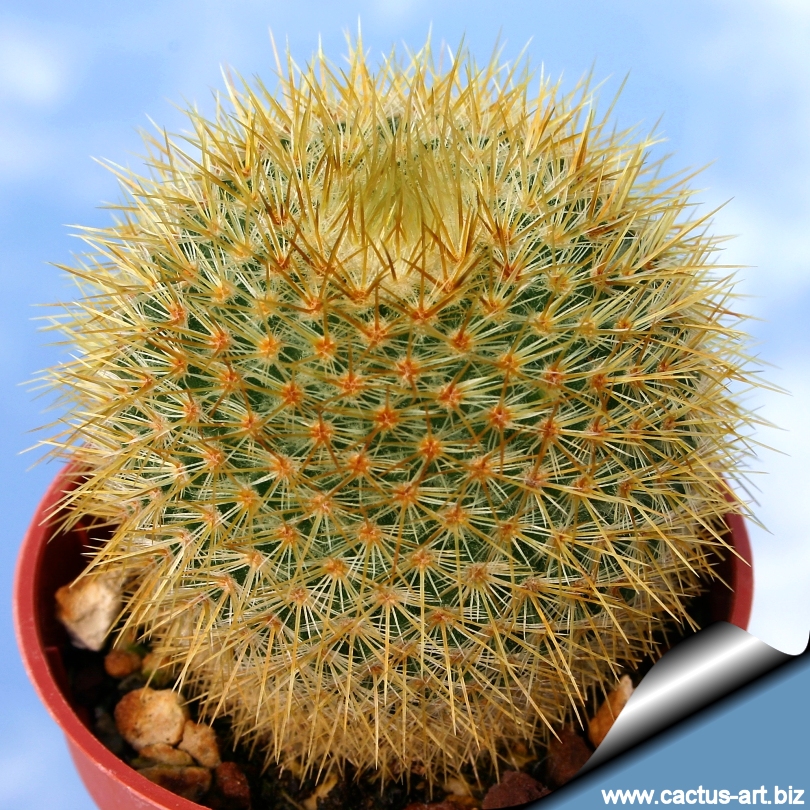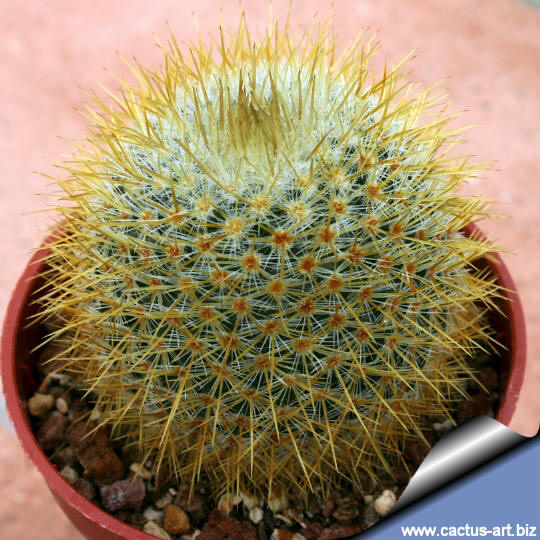|
|
|

Mammillaria flavicentra ML 194 Pala, above Coxcatlán,
Puebla, Mexico 2250m
This species (previously
considered independent ) is now included in Mammillaria
dixanthocentron.
|
|
Description: Plants
solitary, densely covered by short golden spines encircled in white
woolly rings.
Stem: Cylindrical or club shaped, up to 18 cm tall and 7-10 cm in
diameter. Without latex.
Tubercles: Cylindrical.
Axil: With few wool at first, later with curly wool.
Central spines: 4 to 6 bright yellow (usually), orangish to dark
brown, becoming brownish or whitish, approx 5-10 mm long.
Radial: 22-24 pale yellowish to almost pure white 2 - 4 mm long.
Flowers: Pale pink to red, small up to 5 mm in diameter
Fruit: Yellow below, orange above.
Seed: Brown.


|
|
Advertising
|
|
|
|
|
Family:
Cactaceae (Cactus
Family) |
|
Mammillaria flavicentra Backeb. ex
Mottram 1980
First description: Mammillaria dixanthocentron Backeberg
In: Descriptiones Cactacearum Novarum 3: 8, 1963
Accepted
Scientific name: Mammillaria dixanthocentron var.
flavicentra (Backeb. ex Mottram) Repp., 1987
Origin: Mexico (Oaxaca, Puebla)
Habitat: Mammillaria flavicentra
is a facoltative
saxicole that can be found either clinging in clefts and crevasses
in the rock face and also on small hill, with oak trees, and on the
shadier side, under the trees. Altitude 1200- 2700 m
Conservation status: Listed in
CITES appendix 2.
Synonyms:
- Mammillaria dixanthocentron subsp.
flavicentra (Backeb. ex Mottram) U. Guzmán, comb et stat. Nov.
|
|
|
|

Cultivation: An easy-to-grow
and easily flowering species,
but not a fast grower.
Some plants will offset, and moderately large-sized
clumps can be produced in a few years.
Water regularly in summer, but do not over-water
(rot prone).
Use a pot with good
drainage and a very porous potting media, and
keep dry in winter.
Feed with
a high potassium fertilizer in summer.
Avoid frost. Reputedly
sensitive to low temperatures, but less so if kept on the dry side prior
to, and during, cold
weather. Outside full sun or afternoon shade, inside
it needs bright light, and some direct sun.
Bright light, encourages flowering and heavy wool and
spine production.
Propagation: Direct sow after last frost, or
division of larger plants.,
|
|